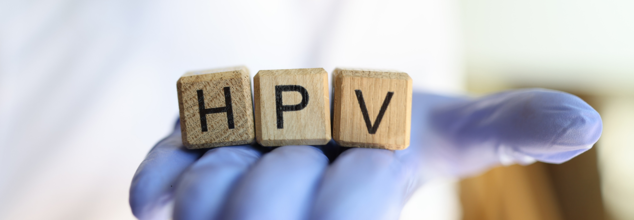- Health Conditions A-Z
- Health & Wellness
- Nutrition
- Fitness
- Health News
- Ayurveda
- Videos
- Medicine A-Z
- Parenting
- Web Stories
Dementia Could Be Detected Early With This ‘Noticeable’ Eating Habit

(Credit-Canva)
Dementia is currently the 7 leading cause of death globally. In 2021 it affected around 57 million people worldwide. The World Health Organization (WHO) stats show that there are 10 million new cases every year. It is a condition that causes people to slowly lose their memories, it later leads to them losing their motor skills as well.
One of the concerning factors of this condition is that if you have a family history of the disease, you may be at higher risk of it, according to the WHO. Early symptoms of the disease can often be vague. The NHS UK explains that the symptoms may have things like memory loss, difficulty concentrating, being confused about the time and place, mood changes. These symptoms get worse gradually and are considered mild. While there is medication for dementia, the earlier it is caught, the better.
Research has revealed many early signs that can allude to dementia, one such aspect affects the dietary habits of the people.
How Can You Detect Dementia Early?
One subtle early clue of dementia can be a change in what someone likes to eat. The Alzheimer's Society points out that dementia can actually alter taste buds. This might mean someone suddenly craves foods they used to dislike or finds old favorites unappealing. While it's easy to dismiss these shifts as just picky eating, they could be an early sign of the condition.
The Alzheimer's Society explains that sometimes dementia can cause people to change the way they eat. These choices could be things the previously disliked or liked, or chose not to indulge in. For example, a lifelong vegetarian might suddenly wants to eat non-vegetarian. Similarly, someone with religious dietary restrictions, like avoiding pork, might start asking for it. In some cases, individuals might also develop compulsive eating or become fixated on specific foods. Support is available for families navigating these challenges.
Does Dementia Change Eating Habits?
As dementia progresses, difficulties with eating and drinking, including fluctuating appetite, are common. Dementia Support UK highlights that our taste buds are constantly evolving. They explain that our taste buds are constantly evolving, and they can change due to age, experience or even illnesses.
Experts explain that it could be them remembering that they used to eat this certain food, before they changed their preference, or they have forgotten they didn’t eat these foods. They could also have just mimicked the action of eating that food after observing someone else do the same.
Can Patients Cope With This Change?
For caregivers, adjusting to these new food preferences is key. The Alzheimer's Society offers several helpful strategies for managing these shifts.
Interestingly, research suggests a growing sweet tooth might emerge in those with dementia. The theory is that as the disease progresses, the brain's ability to process flavors can be affected, making sweet tastes more noticeable and appealing.
However, this can make it harder for caregivers to ensure a nutritious diet. Offering naturally sweet options like fruits and vegetables can be a good way to satisfy these cravings healthily. Adding a touch of honey or sugar to savory dishes might also help. A comprehensive list of suggestions for various eating-related challenges, including sudden unusual food requests, is available.
As dementia advances, a person might mistakenly eat non-food items like napkins or soap. This could happen for several reasons: they might not recognize the object, not understand its purpose, or be hungry and mistake it for food.
It's important to ensure everyone involved in the person's care is aware of this behavior. Where possible, remove any non-edible items that could be mistaken for food. Dangerous substances like cleaning products should always be stored securely as a precaution.
How Often Must You Pay Your Doctor A Visit?

Credits: Canva
We are back again at the viral season. Infections, fevers and COVID-19 cases, everything is going on altogether. Amid all this it is important that you go see your doctor. But, how often must you see them?
Routinely evaluating your risk factors can actually help you steer clear of diseases, ailments and more. This is not just about viral infections, but also chronic diseases, that may have silent symptoms, and so a regular check-up can help you stay one step ahead, always.
How Often Should You Go See Your Doctor?
The recommendation on how frequently should you pay your doc a visit also depends on your age, risk factors and your current health status.
If you are under the age of 45, and in good health, you must visit your doc in every one to three years. If you turn 45 or are over 45, then you must make it a habit to visit your doc once a year.
If you are living with a chronic disease, like diabetes, or COPD, then it is important that you go see a doctor more frequently. For this, your age does not matter. Then, you doctor too can suggest how often must you get your screenings done.
What Are The Benefits Of Regular Checkups?
- Early Detection: Routine checkups help identify potentially serious health issues before they become major problems.
- Timely Treatment: Early intervention increases the chances of successful outcomes and can often prevent complications.
- Ongoing Management: Regular monitoring of existing conditions helps prevent them from worsening or leading to severe health issues.
- Preventive Care: Staying current with vaccinations and screenings ensures timely prevention and early diagnosis of various diseases.
- Cost Savings: Catching problems early can reduce the need for expensive treatments down the line.
- Stronger Doctor-Patient Relationship: Regular appointments foster trust and open communication with your primary care physician.
- Health Education: Your provider can offer personalized advice to help you make lifestyle changes for a healthier, longer life.
What Must You Include In Your Checkup?
For everyone alike, your medical checkup must include your medical history, family history, and medication list, if you are already on medications or have any allergies and your vaccination status.
What Should You Get Screened For As Per Your Gender?
For men and women alike, these are the following screenings:
- high blood pressure
- obesity
- tobacco use
- alcohol and drug misuse
- depression
- HIV screening
- hepatitis C
- type 2 diabetes
- colorectal cancer
- lung cancer
These are the following screening done solely for women:
- mammogram for breast cancer, especially for women above the age of 45
- intimate partner violence screening
- Pap smear test for cervical cancer between ages 21 to 65
- osteoporosis screening
These are the following screening done solely for men:
- abdominal aortic aneurysm screening
- a prostrate exam
90% Of Young Men In Their 20s And 30s Are Unaware Of This Fast-Rising Cancer Threat

Credits: Canva
It’s easy to assume that serious health risks are a concern for later in life. For most young men in their 20s and 30s, long-term health is something they discuss in relation to staying fit, maintaining a balance between job and life, and remaining active. But behind the scenes, there's a silent danger brewing that doesn't carry vehement warning signs or agonizing symptoms, yet is increasing amongst this demographic. And shockingly, nearly 90% of young men don't even know they might be impacted. The truth is, being attuned to your body now might save your life down the road. Here's why medical professionals are urging young men to listen up.
Roughly 10,000 new instances of testicular cancer are diagnosed annually in the United States, according to the American Cancer Society, with an average age of diagnosis of only 33. Unlike the majority of the other cancers that occur later in life, this cancer comes early—most commonly between 20 and 40 years of age.
However, only 13% of the American adults polled recognized that testicular cancer is more frequent among young men and thus ranks as one of the most underappreciated dangers in young adult male health.
Testicular cancer is not only uncommon; it's not well understood. "From my experience, many men are surprised testicular cancer is most prevalent among young men," adds Dr. Shawn Dason, an Ohio State urologist and lead author of the study. "You're just not expecting it in your thirties or twenties."
In contrast to certain types of cancer with sets of initial warning signs, testicular cancer tends to be painless and thus more difficult to notice through sheer habit. The consequence? Late-stage diagnoses that lower survival rates.
Symptoms of Testicular Cancer
Though survival after five years is 95% if caught early, this drops to 73% if the condition becomes widespread beyond the testicle. Despite the high cure rate, however, just 35% of survey respondents thought screening under age 40 is required.
Adding to the threat is that the symptoms—if any—are insidious:
- A bulge or lump in the scrotum
- Heaviness or discomfort
- Change in size or firmness of a testicle
- Pain or tenderness not caused by injury
Far too frequently, these symptoms are overlooked, dismissed, or go unnoticed because of the lack of overall awareness.
Why Testicular Cancer Affects Younger Men?
The reason why testicular cancer so heavily strikes younger men is still being researched, but it is thought to be attributed to germ cell activity, which is greater at a man's reproductive prime. These germ cells, used to make sperm, can become mutated and give rise to tumors.
Some of the risk factors are:
- Family history of testicular cancer
- White ethnicity
- Being tall (according to some research)
- Having undescended testicles (cryptorchidism)
And, for some reason, being overweight hasn't proved to be a major risk factor—despite its link with so many other cancers.
A 2024 study from California found testicular cancer rates in men under 39 increased by 10% over two decades, climbing from 6 to 7.3 cases per 100,000 people. According to the CDC, national figures mirrored the trend, with an increase from 6.3 to 6.8 cases per 100,000 men aged 0–39 between 1999 and 2021.
Experts credit this increase to enhanced screening and environmental or lifestyle factors possibly impacting the development of germ cell tumors in young men.
Early detection is a good thing—and it starts at home. The Testicular Cancer Foundation advises a monthly self-exam, preferably after a warm shower when scrotal skin is soft.
How to Do a Testicular Self-Exam
STEP 1- Visually check for swelling, asymmetry, or change.
STEP 2- Gently explore each testicle with thumb and fingers.
STEP 3- Check for lumps, hard spots, or rapid change in size, weight, or texture.
STEP 4- Check for pain, heaviness, or tenderness.
If you find anything abnormal, consult a doctor at once—ideally a urologist. You might be sent for an ultrasound or blood test.
Even with this easy and possibly life-saving measure, only 54% of men were aware they need to perform monthly self-exams, according to the Ohio State study—and the number that actually do so is probably much less.
What Happens After Diagnosis?
The majority of testicular cancers are treated successfully, particularly if diagnosed early. The initial course of treatment is surgery, where the cancerous testicle is surgically removed. This surgery, an orchiectomy, is usually followed by:
- Surveillance (routine check-ups if detected early)
- Radiation or chemotherapy (for late stages)
- Lymph node removal if cancer spreads
Most men continue to have healthy, active lives after treatment, such as professional athletes Nathan Adrian, an Olympic swimmer, and cyclist Lance Armstrong. Both were diagnosed in their 20s and underwent successful treatment following early detection.
Why It is Important to Prioritize Men's Preventive Health?
The larger concern is not testicular cancer—but men's overall attitude towards their health. Men under age 40 typically avoid preventive care, letting career pressure and everyday life interfere.
Dr. Dason places a premium on mindset change: "We need to make health check-ups and being aware of one's body 'normal' among men in their 20s and 30s. Waiting for symptoms is waiting too long."
Awareness is your most powerful ally in the fight against testicular cancer. If you’re a young man—or know one—start talking about this. Normalize self-exams, reduce stigma, and encourage open conversations with healthcare providers because when caught early, testicular cancer is not just treatable—it’s beatable.
Why Indian Men Are At HPV Risk?

Credits: Canva
Cervical cancer, though almost entirely preventable, continues to claim over 350,000 lives each year — most of them women in developing countries. India carries one of the heaviest burdens. But it doesn’t have to be this way. Science has handed us the tools — vaccines, DNA-based screening, and effective treatments. The real hurdle? Making sure these solutions reach everyone, regardless of gender, geography, or income.
Understanding HPV: The Root Cause
At the heart of the cervical cancer crisis is the Human Papillomavirus (HPV), one of the most common sexually transmitted infections worldwide. Most HPV infections resolve on their own. But when certain high-risk genotypes persist, they can lead to various cancers — not just cervical, but also anal, penile, vulvar, vaginal, and oropharyngeal.
According to the World Health Organization (WHO), virtually all cervical cancer cases are caused by HPV. Every eight minutes, a woman in India dies of this disease — a stark statistic for something that could be prevented with timely vaccination and screening.
HPV Affects Men Too — And We’re Ignoring It
While cervical cancer has gained some attention, HPV-related cancers in men remain dangerously underdiagnosed. In 2019 alone, over 70,000 cancer cases in men were caused by HPV — a number many experts say is underestimated.
This was underscored by a recent study presented at the 10th Asia Pacific AIDS and Co-Infections Conference in Japan. Conducted by Dr Prapti Gilada-Toshinwal at a Mumbai clinic, it screened 105 men who have sex with men. The findings were worrying — 62% had anal HPV infections, rising to nearly 69% among those living with HIV. Many were also battling other sexually transmitted infections, pointing to an urgent need for integrated sexual health services.
Why DNA Screening is a Gamechanger
Globally, experts agree that the best way to detect HPV is through DNA-based molecular tests. Traditional screening methods like Pap smears or VIA (Visual Inspection with Acetic Acid) are no longer considered scientifically adequate.
Yet, India’s most recent National Family Health Survey revealed that only 1.2% of women aged 15–49 had ever been screened for cervical cancer. WHO recommends that 70% of eligible women should be screened — a target India is far from achieving.
A Made-in-India Breakthrough
In a promising development, April 2025 saw the validation of Truenat HPV-HR Plus, India’s first indigenous point-of-care HPV DNA test. Developed by Molbio Diagnostics and approved by leading institutions like AIIMS Delhi and ICMR’s research bodies, Truenat can detect eight high-risk HPV genotypes responsible for most cervical cancers. It’s fast, affordable, and adaptable for rural clinics — exactly the kind of innovation needed to scale up screening access.
The Vaccine That Works — Even in a Single Dose
Vaccination remains our most powerful tool. A WHO-IARC study, led in part by Indian researcher Dr Smita Joshi, revealed that even one dose of the HPV vaccine offers strong protection. This has led to WHO recommending a single-dose vaccine schedule for young girls.
India’s own vaccine, Ceravac, developed by the Serum Institute, is approved for boys as well. Yet, a national rollout remains pending, even as a few states like Delhi and Punjab have begun pilot programs.
Prevention Must Be Inclusive
Activists like Vijay Nair of Udaan Trust stress the need to include men in both vaccination and screening programs. Anal cancers are often missed or misdiagnosed in men, especially those from marginalized communities. Without proper diagnostic facilities like anoscopy centres and broader awareness, many are left untreated — or worse, undiagnosed.
The WHO has set ambitious targets to eliminate cervical cancer: vaccinate 90% of girls by age 15, screen 70% of women by 35 and 45, and treat 90% of cases. But meeting these goals demands more than science — it needs political will, public funding, and sustained awareness.
© 2024 Bennett, Coleman & Company Limited

